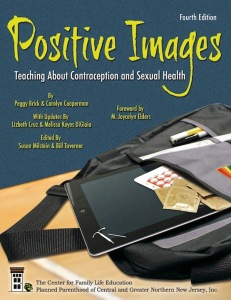On to the third lesson plan about LARCs in Positive Images! This time we’ve moved on from general education about LARCs and the misconceptions associated with them to the contraceptive decision making process.
When I teach college level Human Sexuality (generally in a Psychology Department), I teach content like the details of contraception as a way to lay a baseline for understanding about human sexuality on a psychological level. It is the decision making process around sexuality that is most interesting in these classrooms – to be slightly redundant, the psychology of the process.
_____________________________________________________________________
DECIDING ON A LARC
By Jessica Shields
Objectives
By the end of this lesson, participants will be able to:
1. List three factors to consider when choosing a method of birth control.
2. Explain the difference between long-acting reversible contraceptives (LARCs) and other methods of contraceptives.
Rationale
When used correctly and consistently, contraceptive methods provide protection against pregnancy. However, nearly half (48%) of unintended pregnancies result from contraceptive failure. Long-acting reversible contraceptives (LARCs) – methods that can be used over relatively long periods and which do not require user adherence – tend to be associated with lower pregnancy rates. Such methods, like the intrauterine contraceptive (IUC) and implant have a higher efficacy rate, partly because they are inserted by a clinician and the user has very little to do over the course of use, thereby eliminating user error for longer periods. In this lesson, participants will have the opportunity to examine LARCs as a viable contraceptive option.
_____________________________________________________________________
Beginning with a basic overview of the LARCs, supplemented by a discussion of the perfect versus typical effectiveness of each of the methods, this lesson asks participants to consider important factors in contraceptive decision making:
How easy is it to use?
What might cause it to be less than perfectly effective?
Which one would you recommend to a friend?
Following these details conversations about the logistical and biological specifics of LARCs and other contraceptive methods, the lesson moves on to discuss a number of common scenarios that offer perfect situations for young women and couples looking for contraception:
The girl who doesn’t want her boyfriend and/or her mother to know she is using it.
The committed, monogamous couple who recently had a child and aren’t ready for another one.
The forgetful college student.
While LARCs do not offer STI protection (an argument often levied against them), and so would be insufficient for at least one of the examples above, they do provide contraceptive protection. Some protection is better than none, imperfect though it may be.







